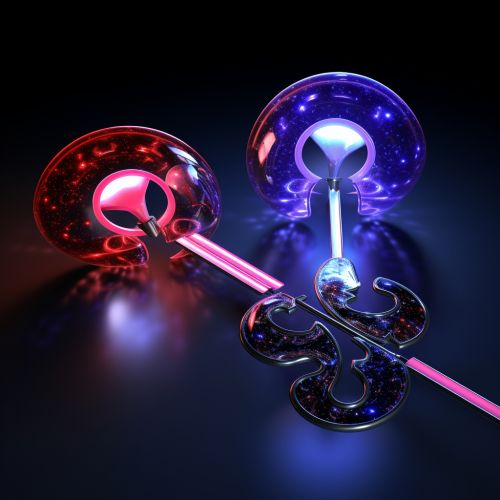The Physics of Quantum Mechanics in Quantum Cryptography
Introduction
Quantum mechanics, a fundamental theory in physics, describes nature at the smallest scales of energy levels of atoms and subatomic particles. It introduces principles and phenomena that are profoundly different from those of classical physics. One of these principles is quantum superposition, which allows a particle to be in multiple states at once. Another is quantum entanglement, which enables particles to be instantaneously connected regardless of distance. These principles, among others, are leveraged in the field of quantum cryptography, a method of secure communication that uses quantum mechanical properties to perform cryptographic tasks.


Quantum Mechanics and Its Principles
Quantum mechanics is a branch of physics that deals with phenomena on a very small scale, such as molecules, atoms, and subatomic particles like electrons and photons. It is a mathematical framework that is fundamentally different from classical physics, with its own set of principles and laws.
Quantum Superposition
The principle of quantum superposition states that a physical system—such as an electron in an atom—can exist in multiple states simultaneously. This is in stark contrast to classical physics, where a system can only be in one state at any given time. The state of a quantum system is described by a wave function, which provides probabilities for the outcomes of measurements of the system.


Quantum Entanglement
Quantum entanglement is another principle of quantum mechanics. It describes a phenomenon where two or more particles become linked and the state of one particle immediately influences the state of the other, no matter the distance between them. This "spooky action at a distance," as Albert Einstein once called it, has been experimentally confirmed and is one of the key principles leveraged in quantum cryptography.


Quantum Cryptography
Quantum cryptography is an approach to securing communications by applying the phenomena of quantum mechanics. It uses the principles of quantum mechanics to encrypt data and transmit it in such a way that any attempt at eavesdropping will be detected.
Quantum Key Distribution
The most well-known application of quantum cryptography is Quantum Key Distribution (QKD). QKD uses quantum mechanics to guarantee secure communication. It enables two parties to produce a shared random secret key known only to them, which can then be used to encrypt and decrypt messages. An important aspect of QKD is that if an eavesdropper tries to intercept the key during its transmission, their presence will be detected and the key will be discarded.


Quantum Random Number Generation
Another application of quantum cryptography is Quantum Random Number Generation (QRNG). In cryptography, high-quality random numbers are crucial for creating secure keys. QRNG uses the inherent randomness of quantum mechanics to generate these numbers, providing a level of randomness that is impossible to achieve with classical methods.


The Physics of Quantum Mechanics in Quantum Cryptography
The principles of quantum mechanics play a crucial role in quantum cryptography. Quantum superposition and quantum entanglement, in particular, are fundamental to the functioning of quantum cryptographic systems.
Quantum Superposition in Quantum Cryptography
In quantum key distribution, the principle of quantum superposition is used to create the keys. Each quantum bit (qubit) of the key can exist in a superposition of states, allowing it to carry more information than a classical bit. This property is used to create and distribute the cryptographic keys in a way that any attempt at interception will disturb the superposition and reveal the eavesdropper.
Quantum Entanglement in Quantum Cryptography
Quantum entanglement is used in a variant of quantum key distribution known as Entanglement-based QKD. In this method, entangled particles are used to create the cryptographic keys. The entangled particles are sent to the two parties who wish to communicate. Because of the properties of entanglement, a measurement on one particle immediately affects the other, no matter the distance between them. This property is used to detect eavesdroppers, as any attempt to intercept the key will disturb the entanglement and be detected.


Conclusion
Quantum cryptography, leveraging the principles of quantum mechanics, offers a new paradigm for secure communication. The peculiar properties of quantum superposition and quantum entanglement, which defy classical intuition, are harnessed to provide security guarantees that are not possible with classical cryptographic methods. As quantum technology continues to advance, the impact of quantum cryptography on the field of information security is expected to grow.
